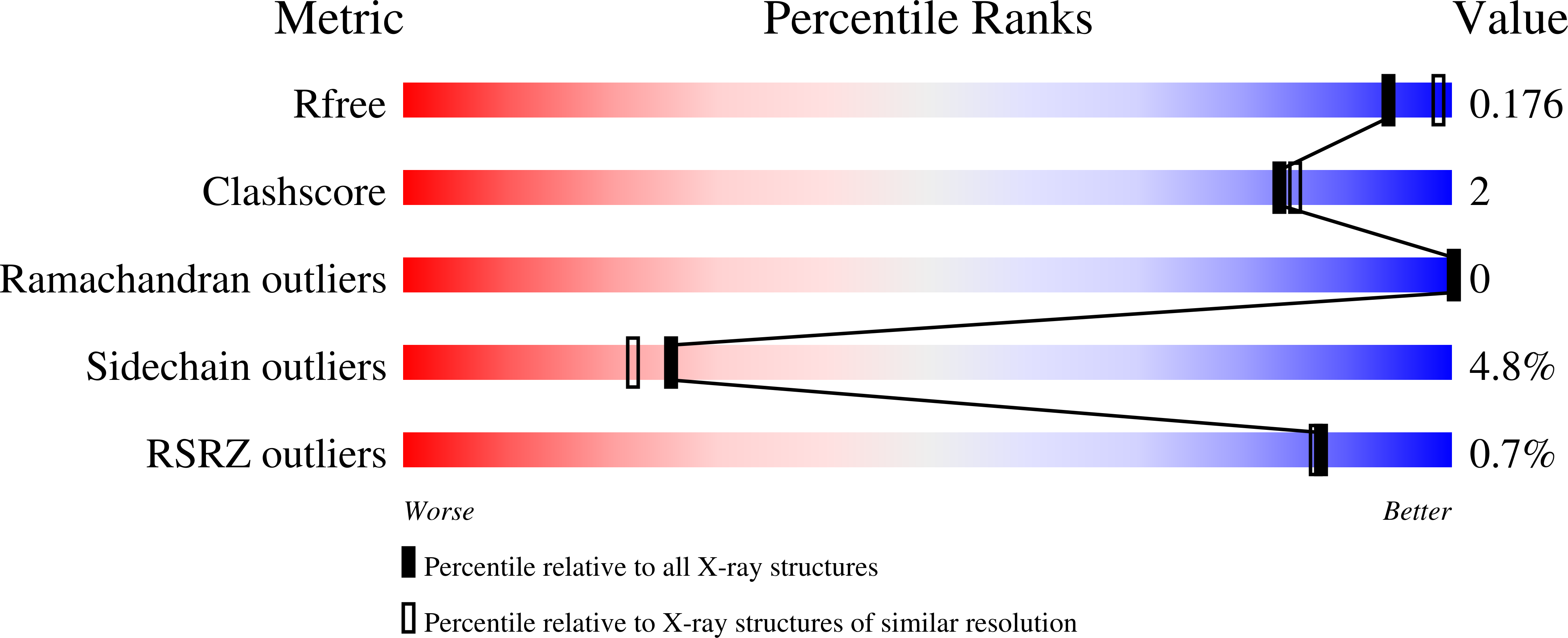The crystal structures of native and (S)-lysine-bound dihydrodipicolinate synthase from Escherichia coli with improved resolution show new features of biological significance.
Dobson, R.C., Griffin, M.D., Jameson, G.B., Gerrard, J.A.(2005) Acta Crystallogr D Biol Crystallogr 61: 1116-1124
- PubMed: 16041077
- DOI: https://doi.org/10.1107/S0907444905016318
- Primary Citation of Related Structures:
1YXC, 1YXD - PubMed Abstract:
Dihydrodipicolinate synthase (DHDPS) mediates the key first reaction common to the biosynthesis of (S)-lysine and meso-diaminopimelate. The activity of DHDPS is allosterically regulated by the feedback inhibitor (S)-lysine. The crystal structure of DHDPS from Escherichia coli has previously been published, but to only a resolution of 2.5 A, and the structure of the lysine-bound adduct was known to only 2.94 A resolution. Here, the crystal structures of native and (S)-lysine-bound dihydrodipicolinate synthase from E. coli are presented to 1.9 and 2.0 A, respectively, resolutions that allow, in particular, more accurate definition of the protein structure. The general architecture of the active site is found to be consistent with previously determined structures, but with some important differences. Arg138, which is situated at the entrance of the active site and is thought to be involved in substrate binding, has an altered conformation and is connected via a water molecule to Tyr133 of the active-site catalytic triad. This suggests a hitherto unknown function for Arg138 in the DHDPS mechanism. Additionally, a re-evaluation of the dimer-dimer interface reveals a more extensive network of interactions than first thought. Of particular interest is the higher resolution structure of DHDPS with (S)-lysine bound at the allosteric site, which is remote to the active site, although connected to it by a chain of conserved water molecules. (S)-Lysine has a slightly altered conformation from that originally determined and does not appear to alter the DHDPS structure as others have reported.
Organizational Affiliation:
School of Biological Sciences, University of Canterbury, Christchurch, New Zealand.

















